My second week at Friday Harbor Labs started with a nice sleep in on Sunday morning and getting to relax over breakfast in my cabin. Around noon I headed down to the dive locker to do a dive with Julian and Kate, two of the scientific diving students. They were hoping to collect some samples for another researcher at the station and I just wanted a reason to get in the water. We got our things gathered and by 12:30 or so had hopped in the water right off the dock to get going. It was a nice day for diving with plenty of sun and we headed over to the clumpweights to see what we could find. Julian and Kate got to collecting pretty quickly and I hung back, snapping some photos here and there of awesome nudibranchs or crabs, every once in a while checking on the other two to make sure we hadn’t wandered too far from one another. The rest of my Sunday was quiet and uneventful, hanging around the labs and catching up on the never ending to-do list.
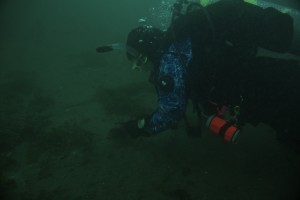
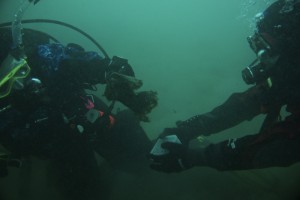
Monday was back to “work” and I had to wake up really early for a research dive with Katie, one of the PhD students. We were doing more work on her site, putting out a few more 2x2m squares and collecting some juvenile kelp samples. We met at the dock and were ready to go by 6:30 and headed out to South Shaw to get diving. We tossed the brick squares overboard and quickly followed in. We set to work getting another 8 sets of squares laid out in the kelp bed, then took a nice drift with the gentle current to a gorgeous kelp forest a bit further down the wall, where Katie searched for small little kelps clinging onto the rocks with their tiny holdfasts. After a solid 45 minutes of diving, Katie decided to end the dive and we ascended to the surface. There is nothing better than starting your morning with a dive through a dappled kelp forest. Upon getting back to the labs, we rinsed down gear and Katie took her little kelp samples to her lab. I spent the rest of that morning relaxing. After lunch, with no other dive planned, I figured I’d take a nap since I had such an early morning. As I was laying my head to rest on my pillow, the cell phone started ringing. I picked up, and it was Stuart – a recent UW graduate who went through the scientific diving program the previous year and was back to help with the class for a week. He wanted to do a quick re-orientation dock dive and needed a buddy, so I gladly said yes! I hopped out of bed and made my way down to the dive locker. I met Stuart, got my gear set up, and we hopped into the water a little while later. It was a nice, relaxing dive under the dock. We headed around the pilings towards the breakwaters and clumpweights, where we spent some time poking around and looking at nudibranchs and fish, before swimming back up to the big pier and weaving in between all the pilings. It was a relaxing afternoon dive and always fun to jump in the water and see what’s hanging around the dock.
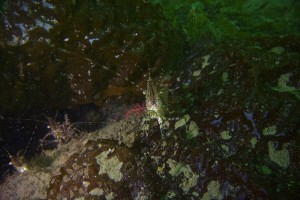
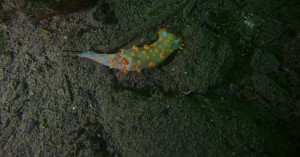
Tuesday was another bright and early start to help with Katie’s project – we got to sleep in a little, needing to meet at the dock, ready to go at 7 am this time around. We headed back out to South Shaw in a team of 4 divers to get a lot of work accomplished. I was buddied with Jessie, another scientific diver out to help for the week, and we’d be setting out 4 more squares, mapping the site, and clearing two randomly selected squares of all macroalgae. We had a solid 50 minute dive swimming around the site, accomplishing all the tasks at hand. The other dive team, of Katie and Drew (one of the scientific diver students) were spending the whole dive looking for more juvenile kelps. We all surfaced from the dive successfully and headed back to the dock by mid-morning. I spent the rest of that morning attending a lecture given to the scientific diving class by a visiting researcher, who studied the effect of light blockage by piers on subtidal communities. He was visiting the labs to run some tests of the dive pier to see how much light was penetrating under the dock and had enlisted the help of some of the scientific divers at FHL (myself included!) After his lecture finished, we headed down to the dock to suit up and get diving. I would be working with Stuart, using a fancy lightbulb contraption to measure light at various depths along various transects. There was another dive team in the water, composed of Katie and Jessie, doing algae surveys along the same transects. Stuart and I were instructed how to correctly take measurements and where to lay each transect and were in the water shortly after. We finished the first transect, measuring light intensity at the seafloor and had surfaced to start doing light intensity at 1 meter depth. We finished two readings but upon trying to get the third, the machine we were using starting having faulty readings. After some attempts at fixing the device, we realized that it was a bigger problem than we initially thought so we exited the water and got back up to the dive locker. Somehow, the cable connecting the bulb to the reading machine had disconnected or faulted, so the machine was no longer taking accurate readings. Unfortunately, it was a fix that couldn’t be done right then and there, so our diving was over for the day. Another lesson learned about research – sometimes things break or malfunction and throw your whole plan into a tailspin – you then either have to think fast on your feet to reach a new solution, or you have to keep a good attitude about an unforeseen setback and keep working to push ahead. Everyone was saddened that we couldn’t continue the data collection and called it an early day. That evening, with not much to do, I decided to take a hike down the fire trails on the back side of the campus. Friday Harbor Laboratories owns quite a lot of land and has a nice series of trails that are open to the students and the public and for whatever reason, I hadn’t explored them yet! I put my headphones in and took a nice, relaxing hike through the sun-dappled woods, in pure bliss of the peaceful forest around me. It was such a pleasant end to my day and gave me time to think and relax and enjoy the gorgeous wilderness the Pacific Northwest has to offer.

Wednesday I got to sleep in even more! We weren’t meeting at the dock until 7:45 to help Katie with the last of her research dives for the week. Today it would be Jessie and I as a buddy team again, and Katie was working with Olivia (another one of the scientific diver students) in a buddy team. We headed back to South Shaw in the early morning light and hopped in the crisp water, with a lot to get done. Today, Jessie and I had to clear 10 randomly selected squares for Katie’s project. In addition to merely clearing the squares, we had to take samples of the macroalgae contents within each square to bring back to the lab to be dried and weighed to calculate overall biomass being removed. This meant that Jessie and I were swimming around with 5 goodie bags each, plus a small quadrat to use for the biomass sample. At the beginning of the dive, it was no big deal, but with each square we cleared, we had another full bag of kelp and macroalgae to tote along, and some of the bags sure were full! Jessie and I worked with the efficiency of a well-oiled machine, quickly finding the squares we needed and ripping out all the macroalgae within. Katie and Olivia, in the meantime, had a list of squares they were going to plant kelp zoospores (essentially, the “seeds” of a kelp) within. Jessie and I had a solid 75 minute dive working on the clearing and managed to get 95% of the work done, a quite impressive feat. We surfaced, cold but happy at accomplishing so much in the dive. After getting back to the dock, we rinsed our gear, put the kelp biomass samples in organized trays to be dried later, then had a quick hot chocolate break in Katie’s cabin. By this time, it was practically lunch, so I headed back to my place to eat some food and figure out my plans for the evening. Chris, one of the PhD students, had asked if I could help him with one of his dives that afternoon, and I willingly agreed. He had a series of anemones underneath the dock that he was periodically visiting and photographing, to then calculate growth of the stalk by determining its circumference. We met up on the dock and after he explained to me his process to get the photos, we geared up and hopped in. The anemones he is studying are these beautiful white anemones with a long stalk with tentacles at the top. When the anemone is “happy” its tentacles are spread wide and it’s full of water, making it nice and fat. For Chris’s photo, he has to clearly see the entire pedal disc (the area that the anemone attaches itself to a substrate) so we had to use the very scientific technique of tickling the anemones to make them close their tentacles and squirt out some water to decrease the stalk size. Boy, I could not be more excited to give tickling anemones a try! We hopped in the water and got to tickling – at each location, there are 3 specific anemones he measures (they are stained with a harmless dye to distinguish them from the crowd). Once the anemone is sufficiently tickled and shrunk, we place the photo quadrat on the area, with the anemones centered, and click away to grab some shots. It’s not too bad, except the whole time you’re doing this you’re upside down, because the anemones are growing on the bottom of one of the floating docks. In addition, you’re only in about 4 feet of water, so you’d think it wouldn’t be exciting. But the invertebrate community on the bottom of the dock was incredibly diverse and interesting, so it was actually one of the coolest dives I had under the dock! We managed to photograph all ten of his anemone groups and even managed to grab a few selfies to boot!
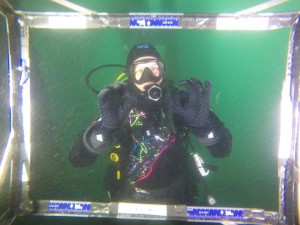
After surfacing and getting things put away, I bolted back to my cabin to quickly change, as I was meeting up with Pema and a few other folks for dinner and barely had a minute to spare. I managed to pull myself together in record time and enjoyed a great dinner with a few of the researchers and Pema. To top off an excellent dinner, there was an ice cream making competition between Alex and Chris that night, and I was asked to be a judge! They each had made 3 similar flavors and a group of students, staff, and researchers had been called in to act as judges. Alex ended up winning the competition, but both guys made AWESOME ice cream, and everyone was a winner for getting in on some delicious frozen treats that night.
Thursday was my last day of diving, and I was sad to know I’d soon be leaving such an awesome place. I started the morning out doing a dive with Chris and a team from the Ken Sebens’s Lab, to try and recover a missing concrete base that had been accidentally dropped in water a little deeper than intended. The base was supposed to be in about 50 feet of water, but had been dropped a little too far off the sloping wall and was suspected to be sitting at around 150 feet. The good news is that a 100 ft line and float had been attached to the base and would be theoretically sitting somewhere in the water for us to spot. There were 4 divers – Chris, Derek, Jim, and myself to do this search and recovery mission. We loaded up the boat with our tanks and gear and set off just around the corner to the area they thought the base would be. Our search method was maybe a bit unorthodox, but we figured we’d give it a try and see if it would yield any results. One buddy pair would hold the end of a 50 ft line and swim at 70 feet along the wall. The other buddy pair would hold the other end of the line and swim at 70 feet out in the green water, with the hopes that if the line and float were sticking up, the line between the two buddy teams would catch on the float and we’d be able to then use the line to tie the float to the wall to come back to later for extraction of the block. Derek and I were the team swimming along the wall while Chris and Jim swam out in the green. After about 35 minutes of swimming and not feeling anything, Chris and Jim headed back to the wall where Derek and I were and we slowly began our ascent to our safety stop. Unfortunately, we were unsuccessful in relocating the base, but we gave it our best shot and that’s all that could be asked for. After a quick lunch for me, I headed back down to the dock for my very last Friday Harbor Labs dive! Louise, a woman from the rockfish research group had requested the help of two divers to check out a problem they had been having at one of their research sites. The group had tagged a series of rockfish at certain locations (rockfish don’t tend to travel far from set locations, making them easy to study) and had set up acoustic responders that essentially ping every time a tagged rockfish is in the vicinity of the responder. This transmits the data up a cable to a dry box where the information is recorded.
At some point in time, the cable that transmits the data stopped transmitting, so they wanted to send some divers down to get eyes on the cable and the responder at depth, to see if there was visible damage to the line. Stuart and I were going out as the divers and we had our cameras with us to document footage of the cable to bring back for the engineers to inspect. We boated out to the dive site and hopped in, finding the cable at the surface of the water and following it from there. We submerged and slowly made our way deeper, swimming just above the cable as it weaved along the seafloor. We swam all the way down to the responder at around 70’ and saw no signs of compromise to the cable at any point. We slowly turned around and swam back up, tracing our path in case the new perspective would show some damage we had missed, but we made it all the way back to the surface seeing nothing of significance. Back at the boat we reported what we saw and without further ado headed back to the labs. After taking apart gear and rinsing everything down, I gave my memory card to Louise for her to download the video footage I had taken. It was unfortunate that we couldn’t report any significant damages, but at least the video would provide some sort of visual for the rockfish team to inspect and analyze.
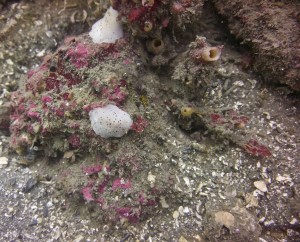
That evening, the scientific diving class had been invited up to the home of Megan and David, a couple who have been working as professors and researchers at Friday Harbor Labs for decades and had built a beautiful home on top of Mt. Dallas on the west end of San Juan Island. We all carpooled over to their house, getting a nice little island tour as we went along from the east coast to the west coast. Megan and David have a gorgeous house, sitting on top of Mt. Dallas, with a direct view towards Mt. Baker in the distance. It is a house they built themselves back in the 80’s and is almost akin to walking through a natural history museum, with walls covered in prints and photos of various marine life and shelves filled with books, bones, shells and artifacts speaking to a life well lived and explored. Everyone had a lovely evening, munching on snacks and chatting, swapping stories of the labs back in the 80s and the way it is now and laughing over many silly memories. It was such a perfect end to my trip to Washington, with a gorgeous sunset and amazing company.

Friday I let myself sleep in a little, as I wasn’t diving and just needed to use the day to pack up my bags. After a nice breakfast at the dinning hall, I headed down to the dive locker to get my gear out in the sun to dry out before I packed it all away. I then headed back to my cabin to pack all my clothes and gear that was already dry. It was a slow and easy day and after lunch, I headed down to the dive locker to grab the rest of my gear and hang out with some students who were going in and out between their research dives. At 5:30 I headed up to the dining hall for TGIFHL, to enjoy my last evening of drinks and socializing at the labs. I got to talking with Chris and Tim, and I reminded Chris that I still had not yet had a fluffer nutter, despite spending two weeks in Boston in June, and Chris, an East-coaster, had been promising since my first day at FHL to make me one. We headed from TGIFHL to his cabin to finally make that long anticipated fluffer nutter- a sandwich concoction of peanut butter and marshmallow fluff. It was heaven at first bite! So sweet and tasty, I immediately understood why the entire east coast is obsessed with them. Upon finishing my tasty treat, Tim and I headed out to have a proper island tour (ironically on my last day on island, but late is better than never!). Tim drove me all around the island, pointing out significant sites and locations and giving me quite an in-depth history of the island. We ended the tour at Roche Harbor, a popular yacht club and tourist destination, where we enjoyed a drink and chatted the evening away.
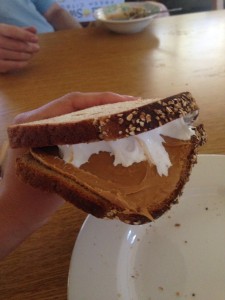
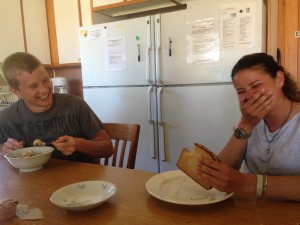
Saturday was a truly early morning for me – I booked a shuttle from the San Juan Island ferry terminal all the way to SeaTac (which was nice because it saved me from having to make a bunch of transfers) but required me to wake up at 4:15 am to be ready to meet the shuttle at 5:15 at the ferry terminal. I managed to find and board my shuttle with no problems and had a quick and smooth ride over to SeaTac airport, where I’d be catching a flight home to Houston for a small 2 day layover (aka laundry and repacking days!)
I had finished my long trip to the Pacific Northwest and I was sad to be leaving, for I had fallen in love with the rugged mountains, untamed forests and cold, enchanting waters. Although I was leaving for the time being, I do hope to return and spend more time exploring the vast area of the Pacific Northwest.
